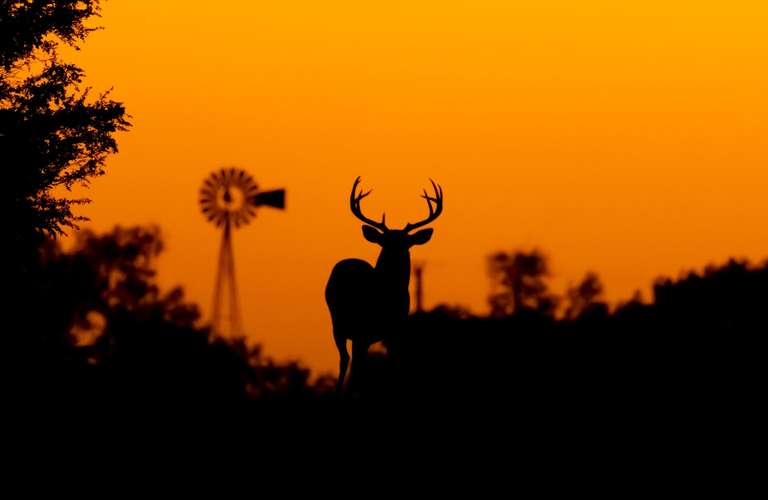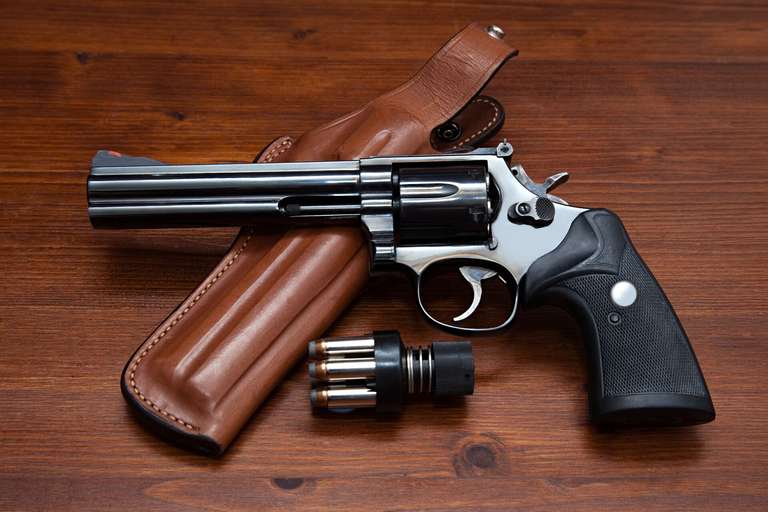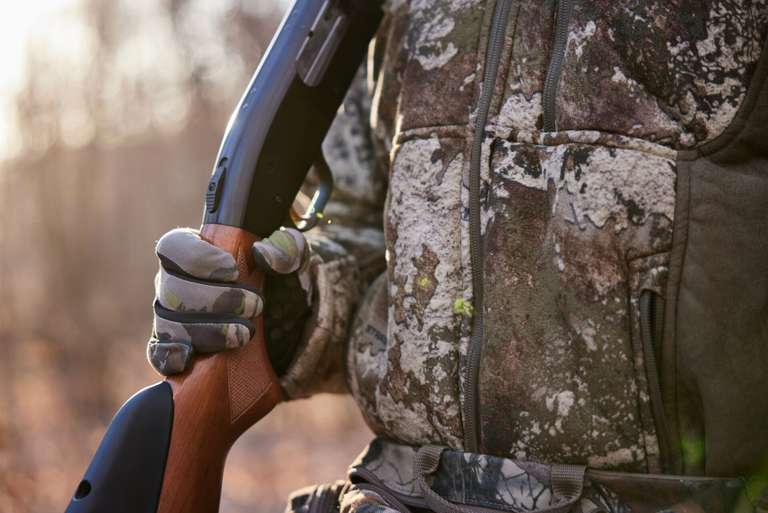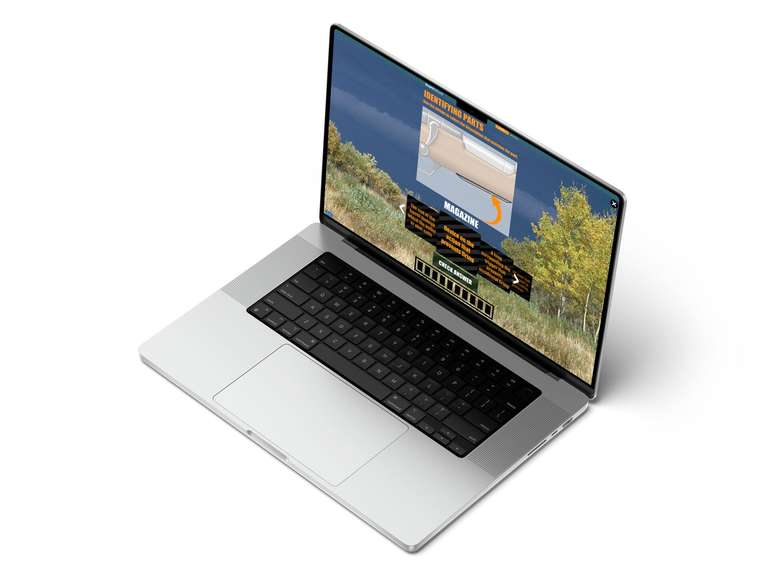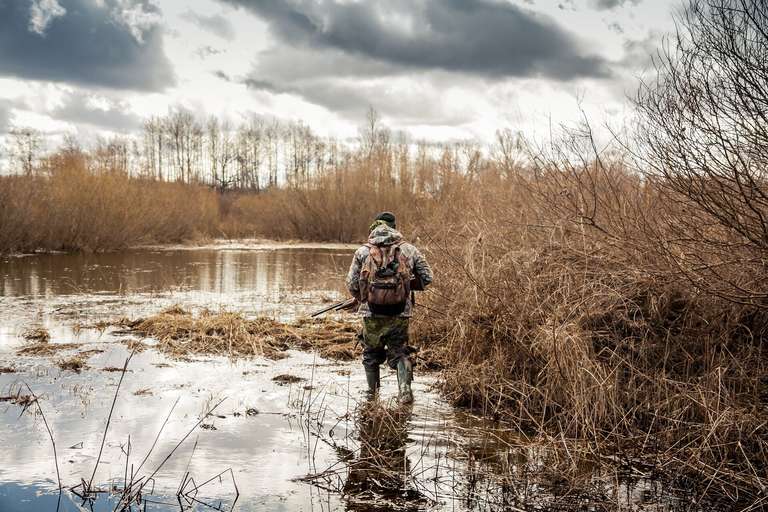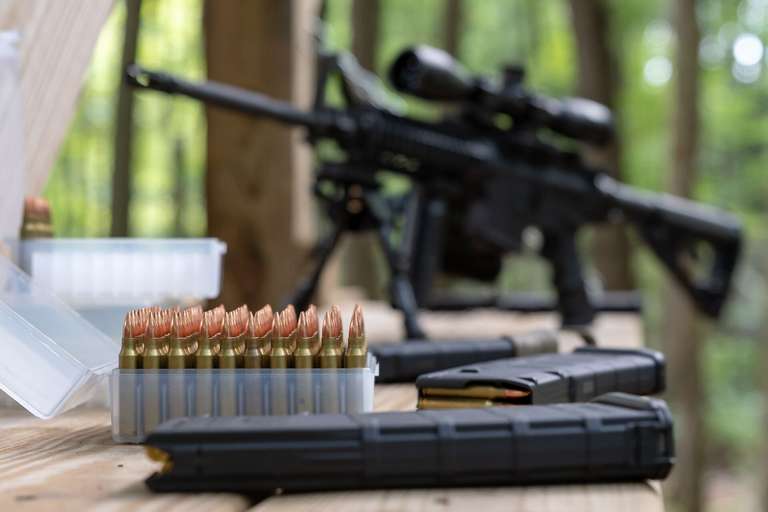After the Shot: Dressing a Deer in the Field
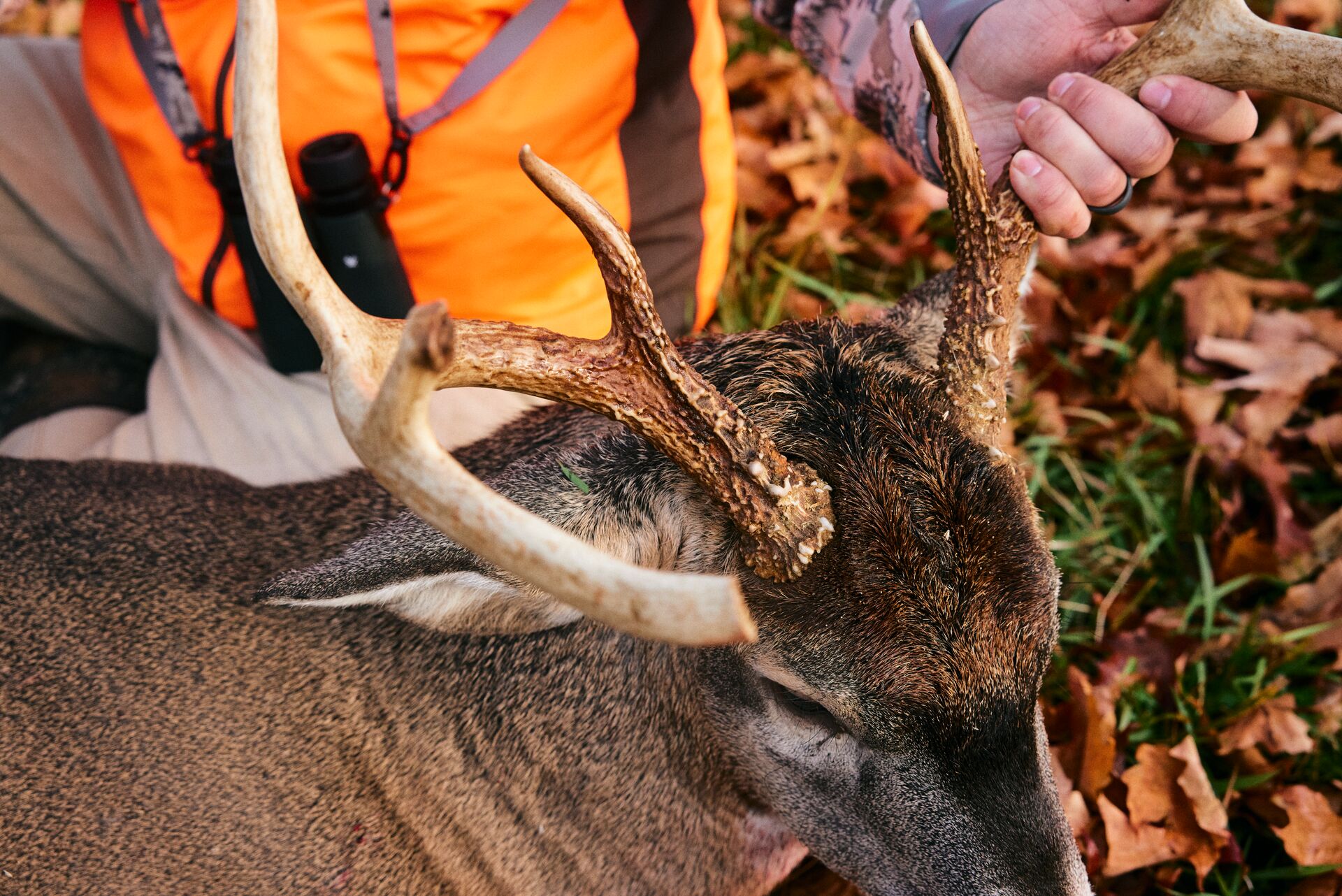
Harvesting your first deer can be one of life's most exhilarating experiences. Hours of practicing with your weapon, studying your quarry's behavior, and exhaustively planning your hunt have finally paid off.
However, the real work begins when you have to field dress a deer. Processing your deer is a crucial skill every hunter needs to master because it directly affects the quality of the meat and aids in efficiently transporting that meat back home.
Let's walk through what to do when dressing a deer!
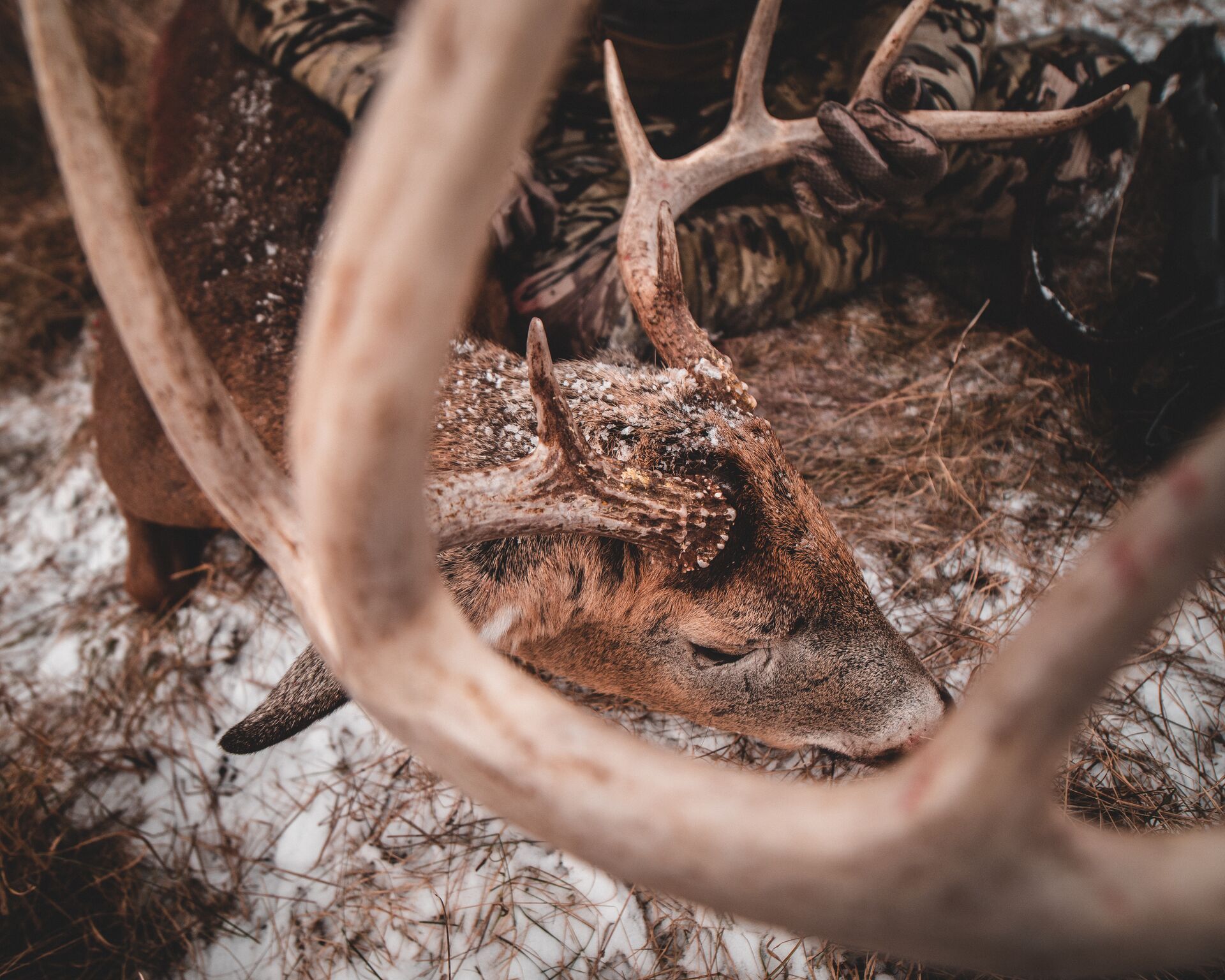
Why Field Dressing Matters
Field dressing, or gutting, to extract the deer's internal organs is a critical part of the hunt that directly impacts the quality of the meat.
Removing the entrails drops the deer's internal temperature to reduce the risk of spoilage, especially in warm weather. Depending on the extent of the internal damage, field dressing also minimizes the chance of contaminating the meat from intestinal bacteria, stomach acids, and blood.
A field-dressed deer is also lighter to transport. On average, a gutted deer can eliminate about 20 percent of the animal's weight. For example, a whitetail with a 200-pound live weight will weigh around 160 pounds after it's field-dressed.
You'll Need Essential Field Dressing Tools
Before heading out on your hunt, make sure you have the following tools in your pack or "kill kit":
- Sharp, sturdy knife with at least a 3-inch blade
- Portable knife sharpener (or replacement blades)
- Latex or nitrile gloves
- Small bone saw
- Game bags
- Rope, string, or zip ties
- Clean water, soap, paper towels, or wet wipes
- Bandages and antiseptic for cuts
- Deer tag
These items help you dress the deer effectively and safely.
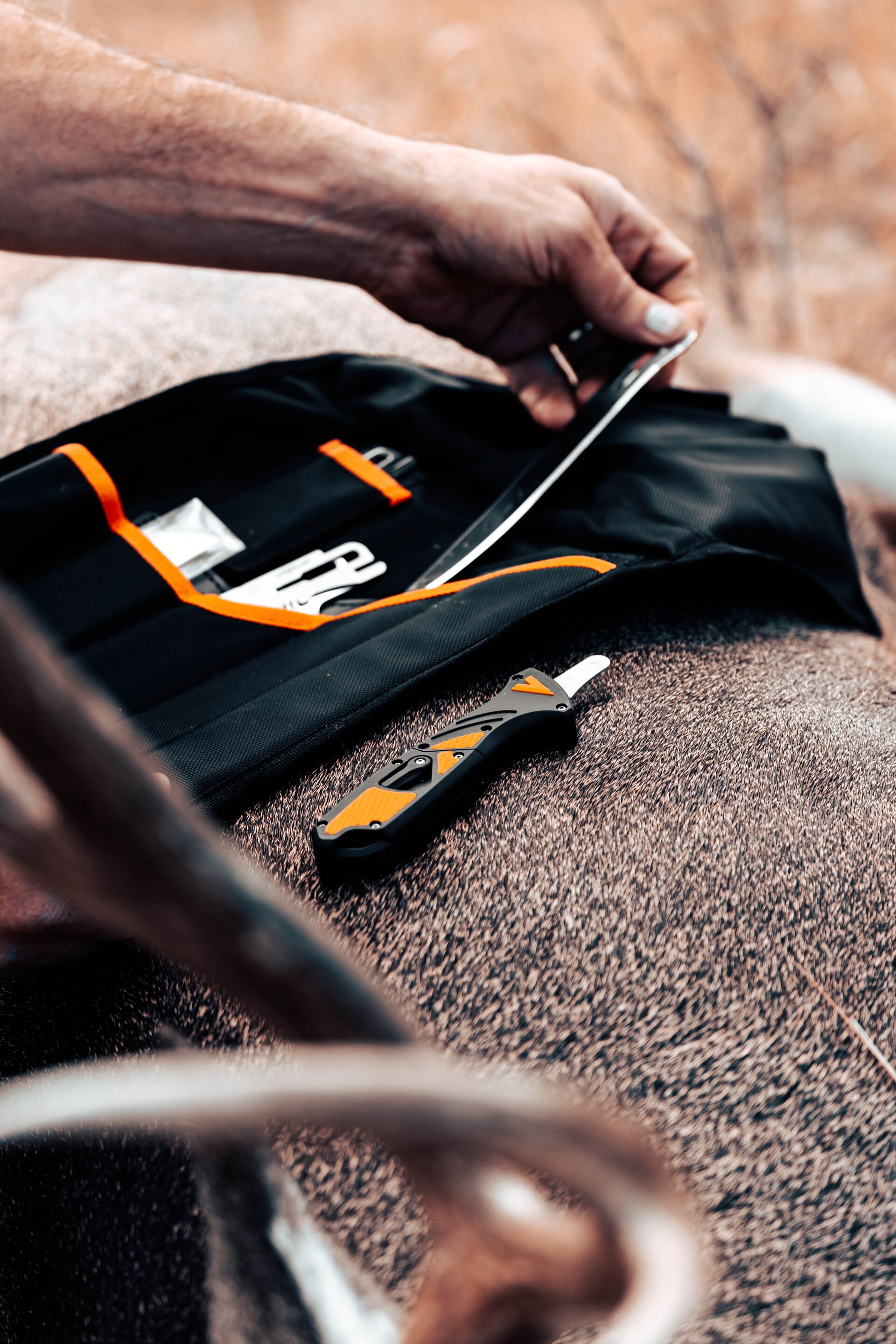
The Field Dressing Process
Field dressing your first deer can be intimidating. Just follow these basic steps and remember your primary goal is to remove the internal organs.
Then, processing the meat comes later.
Position the Deer
Roll the deer onto its back with its rear legs spread so you can access its abdomen. If you're on a slope, position the head uphill to let gravity help.
Cut the Abdominal Skin
With the deer in the correct position, you'll start the process by making your first cut.
- Using only the tip of the knife, make a small cut in the skin just below the sternum at the bottom of the ribcage. Do not cut through the meat.
- Cut the skin down the belly to the genitals. Continue around the genitals to the anus.
- Cut a ring around the anus and tie it off with string or a zip tie to avoid leakage.
- Return to the rib cage and cut through the skin toward the jaw.
Open the Abdominal Cavity
Here's your next cut:
- Make a small incision through the muscle just below the sternum. The hole should be large enough to insert your index and middle fingers.
- Put two fingers in the hole and lift the abdominal wall away from the stomach and intestines.
- Insert the knife, edge up, between your fingers. Cut the muscle as you move toward the pelvis, using your fingers as a guide.
- Use a bone saw to split the front of the pelvis where the intestine goes through the bone.
Open the Chest
Your third cut opens the chest cavity. Remember, these cuts will help you remove the internal organs to protect the deer's meat and make the animal lighter for carrying out.
- Return to the sternum and cut or saw through the cartilage connecting the ribs to the sternum.
- Sever the windpipe and esophagus as high in the neck as you can.
- Remove the heart if you want to keep it.
- Carefully cut the diaphragm (the muscle separating the heart and lungs from the stomach and intestines) to the spine.
Remove the Organs
Now, you're ready to take out the internal organs.
- Turn the deer on its side.
- Starting with the esophagus and windpipe, gently and firmly pull down. All of the internal organs, from windpipe to anus, should come out in one big pile. If they don't, you may have to carefully cut the connective tissue holding the organs to the back.
- If you want to keep the liver or kidneys, cut them from the entrails.
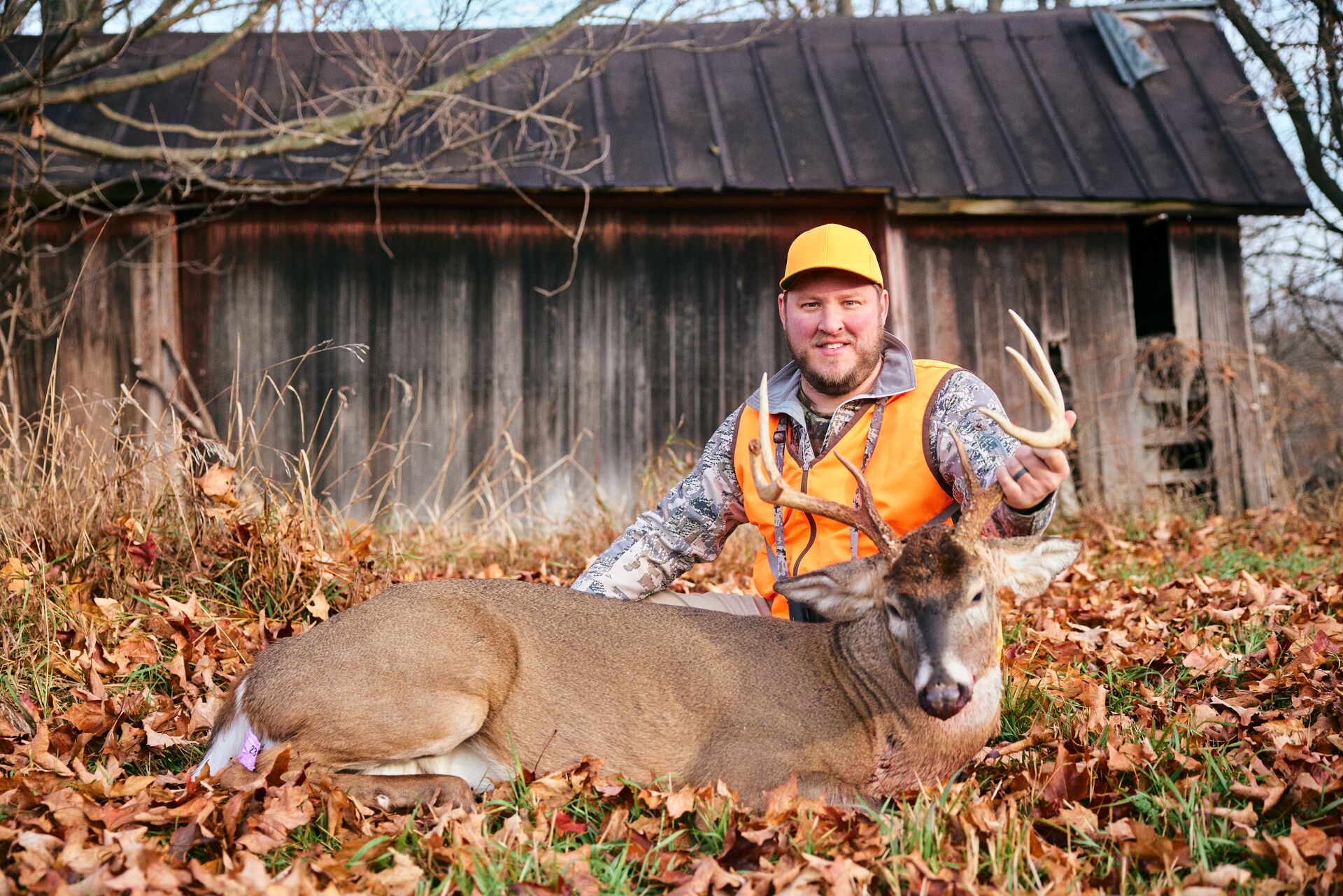
Inspect for Disease
This next step is crucial. Pay close attention to the organs for disease.
Discolored spots and abnormal smells could be indicators of health issues. Also, look for pus or pockets of blood in meat that are not associated with the bullet or arrow wound. If these are present, the meat is unsafe to eat.
If you notice anything unusual, your smartest option is to consult with a game warden or wildlife biologist.
Keeping the Meat Clean
Moving slowly and steadily is the rule to follow to keep the meat as clean as possible and avoid getting dirt and debris in the cavity.
Cutting the skin with the knife's edge up — or cutting the skin from the inside out — should keep most of the hair intact and from falling on the meat. Once the deer is gutted, use clean water or snow (depending on the time of year) to remove any blood from the cavity and pat dry with paper towels.
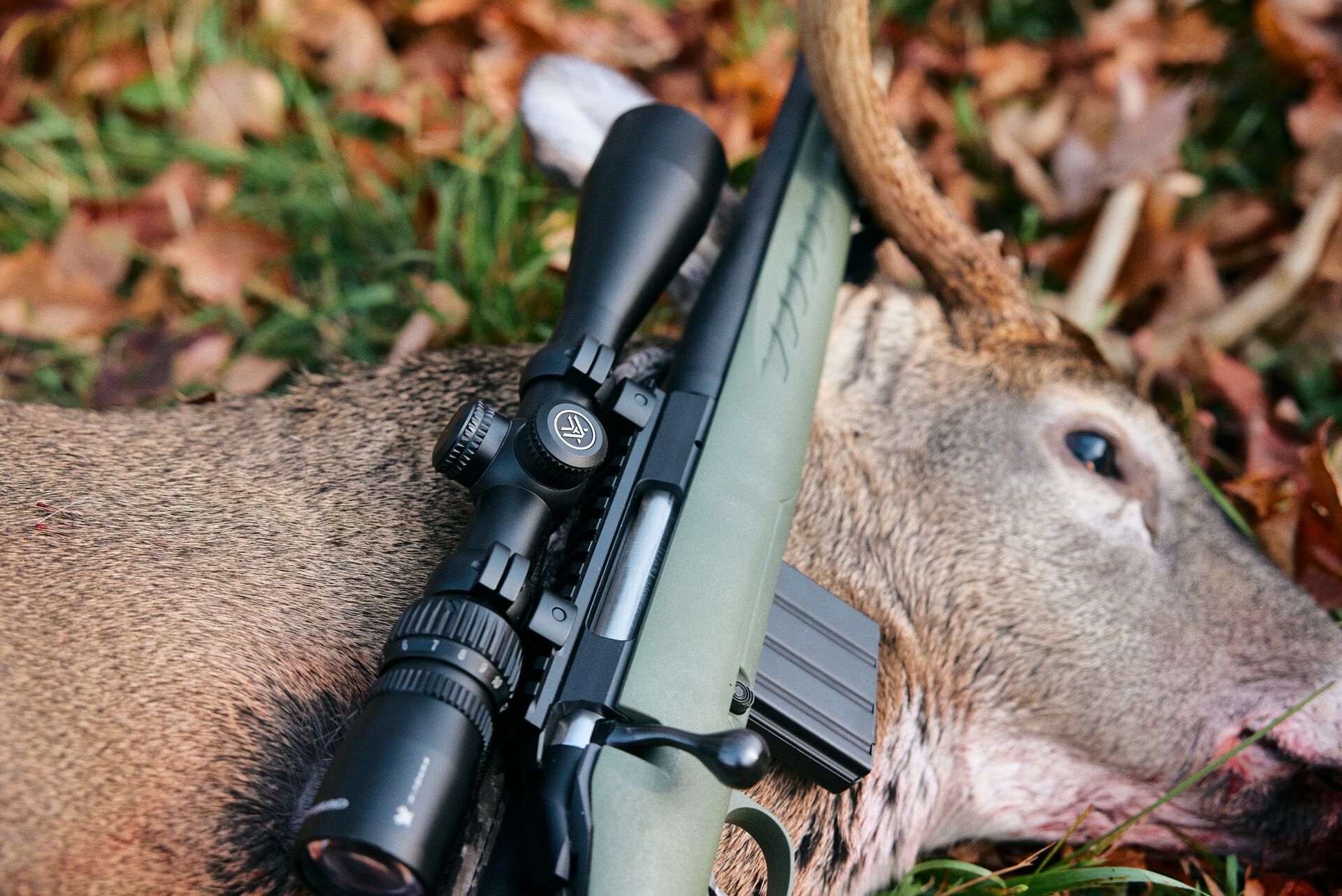
Handling the Carcass
Once you've gutted the deer and the carcass is cooling, it's time to get your venison home as quickly as possible. Speed is critical in warm weather.
Depending on the terrain and distance from your vehicle, you can move the deer in a game cart or sled (if there's snow on the ground). If you're strong enough, you can also carry the deer over your shoulders.
Another option is to quarter the deer, put the quarter, organs, backstrap, and tenderloin in game bags, and carry them in your backpack. To keep your backpack from getting bloody, put the game bags inside a garbage bag.
Disposing of the Gut Pile
Properly disposing of your deer's gut pile is essential to being an ethical hunter.
When leaving your deer's entrails, consider these best practices:
- Keep the entrails away from trails and water sources.
- Cover the pile with leaves or brush to hide it from sight if possible.
- On private property, always follow the landowner's preferences. Some may want you to bury the entrails, leave them as is, or remove them from the property.
Blood and entrails will attract scavengers. While this is a natural part of the ecosystem, make sure you are disposing of the remains in a way that doesn't create problems for wildlife or other hunters.
Always check with local regulations regarding the disposal of your deer's remains. Some jurisdictions have specific requirements if the population is affected by diseases like Chronic Wasting Disease.
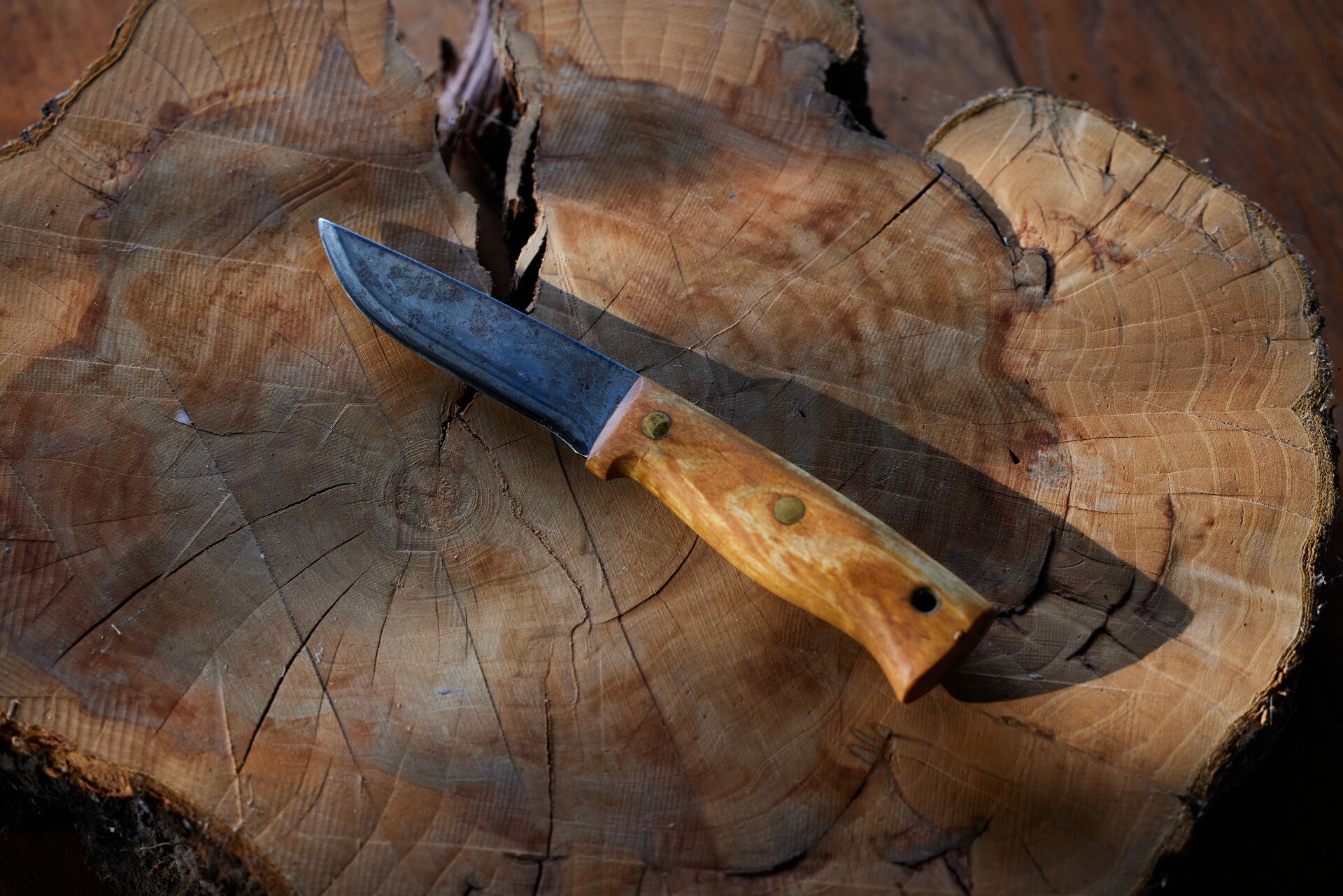
Exercise Safety Precautions
Using sharp tools mixed with bodily fluids dictates that you pay careful attention to safety throughout this process.
Remember to:
- Always cut away from your body and fingers.
- Keep your knife sharp. A dull knife requires more force and is more likely to slip and cause injury. If you're not good at knife sharpening, consider using a knife with replaceable blades.
- Wear gloves to keep fluids off of your hands.
Lastly, do not eat, drink, or smoke while handling the deer.
Legal Considerations
Understand local and state regulations regarding processing your deer and disposing of the entrails and carcasses. Keep the sex organs intact for transport, and properly tag your deer.
Know if your state has special handling and transportation requirements.
Caring for Your Equipment
After you've completed field dressing your deer, clean and sanitize your tools to prevent bacterial contamination and rust.
Wash your knives, saws, and game bags with hot, soapy water. Also, disinfect your tools with a bleach and water solution (3/4 cup bleach to 1 gallon of water).
Then, dry your equipment and sharpen your knives before storing them. You'll be ready for your next deer to process!
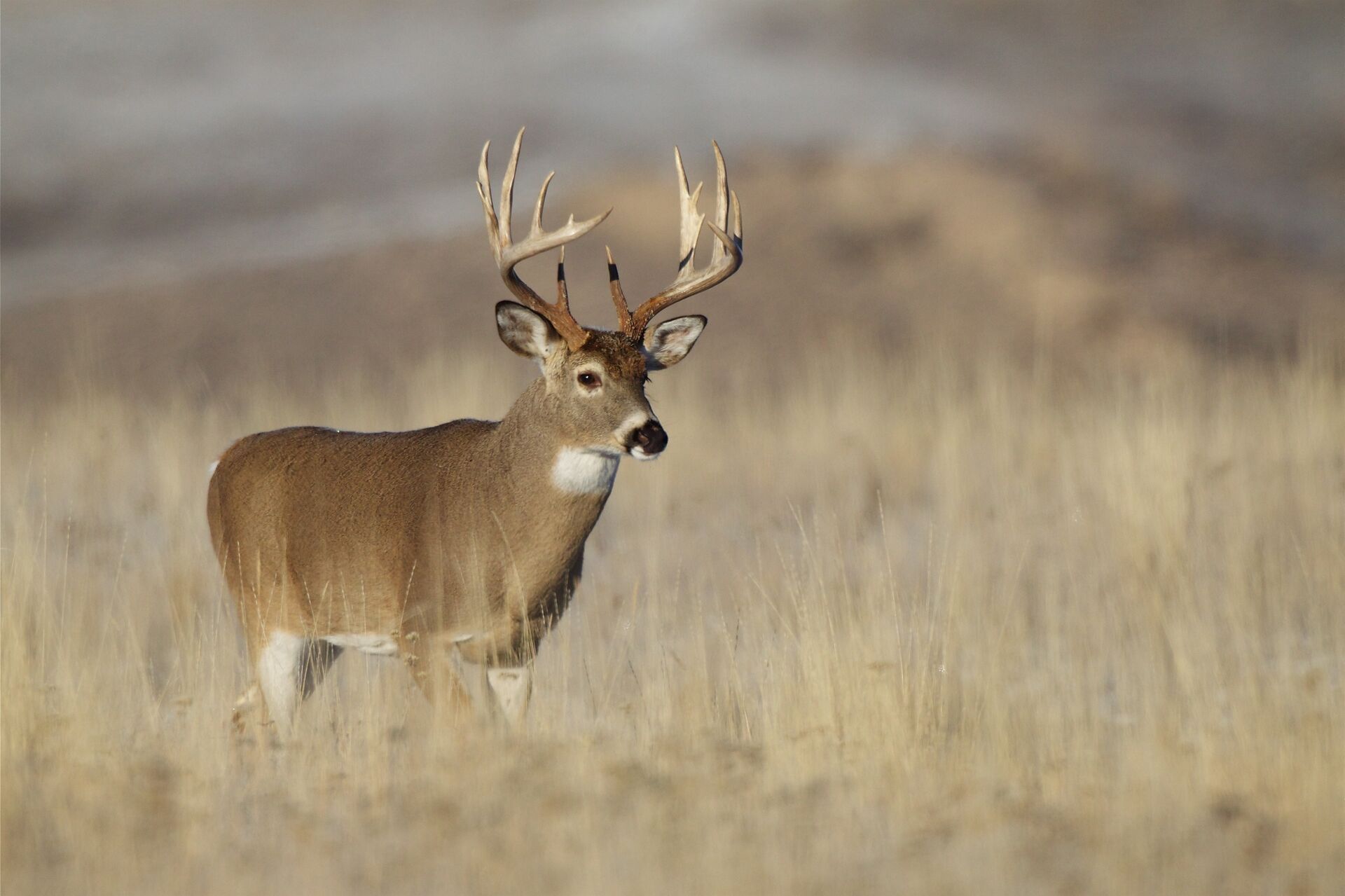
Stay Safe When Hunting and Dressing a Deer
Knowing how to efficiently and safely field dress a deer is one of a hunter's fundamental skills. By doing so, you preserve the quality of your hard-earned venison, develop a deeper connection to the animal you harvested, and experience the complete process from field to table.
Remember, practice makes perfect with field-dressing deer — so get out and hunt!
Plus, there's always more to learn about every aspect of hunting, especially when it comes to safety. We recommend taking a hunter safety course through ilearntohunt to enhance your skills and knowledge. Or, if you've never taken a hunter education course, you'll likely need to complete one before getting a hunting license to hunt in your state.
Our gamified online courses offer invaluable insights into ethical hunting practices, wildlife conservation, and advanced field techniques. Plus, they're a fun way to learn before hitting the field!
We hope you get to apply these tips for dressing a deer this season. Before you head out, choose the ilearntohunt course for your state and start learning.

